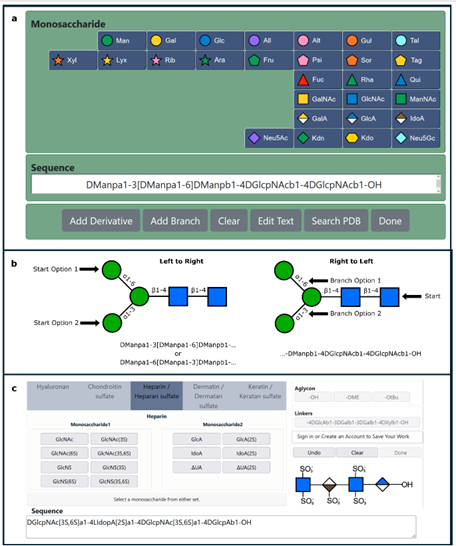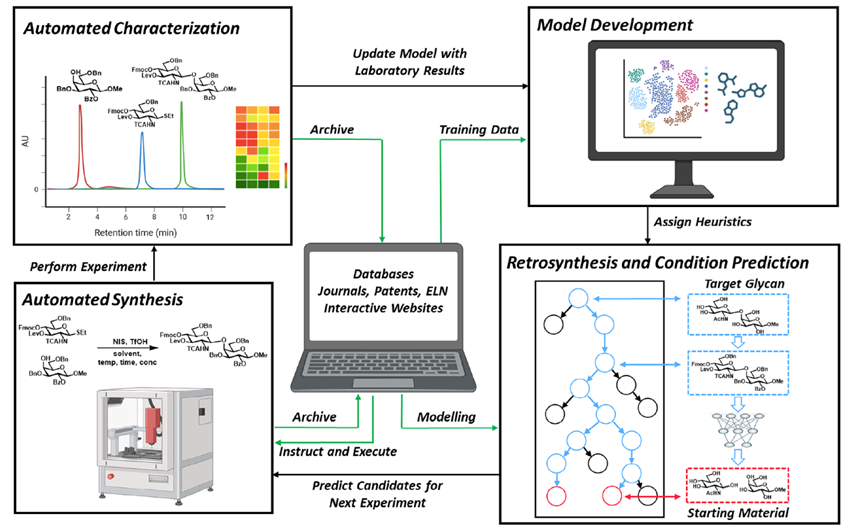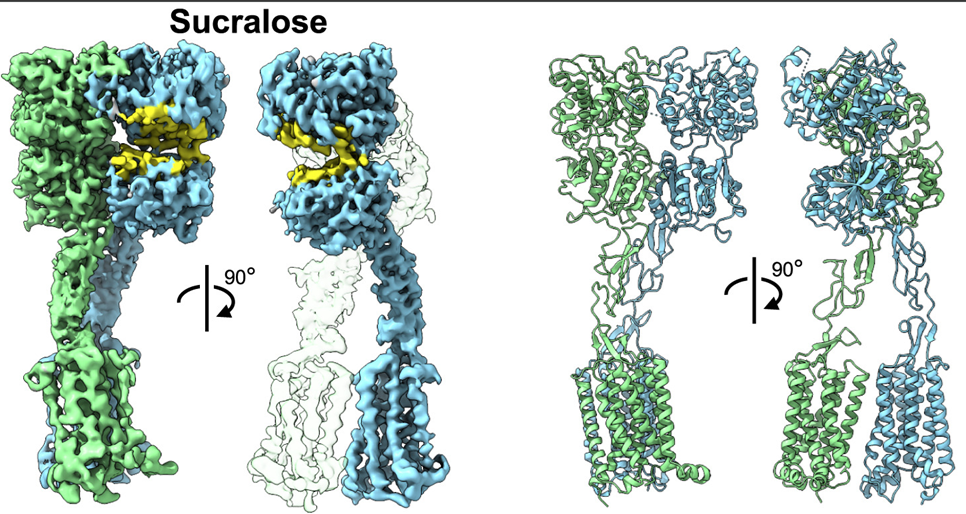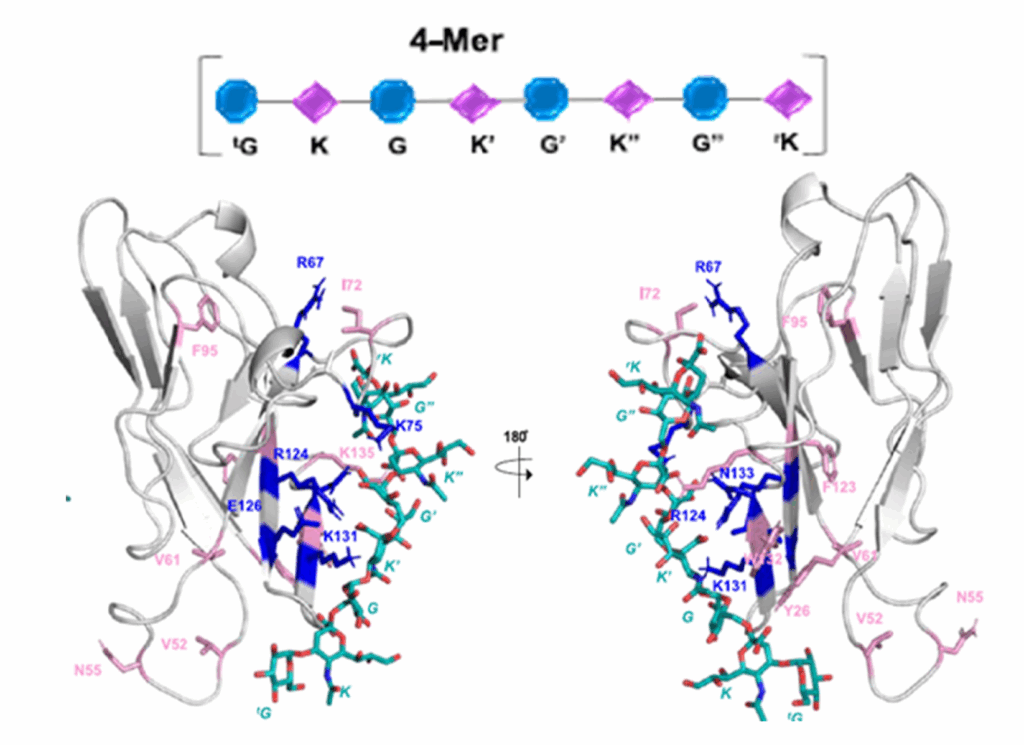The starch granule is Nature’s way to store energy in green plants over long periods. Irrespective of their origins, starches display distinct structural features that are the fingerprints of levels of organization over six orders of magnitude. The underlying hypothesis is based that Nature retains hierarchical material structures at all levels and that some general rules control the morphogenesis of these structures.
The occurrence of a «phyllotaxis» like features that would develop at scales ranging from nano to micrometres was concerned. This hypothesis provided the basis to develop a novel geometric model capable of building complex structures from simple components.
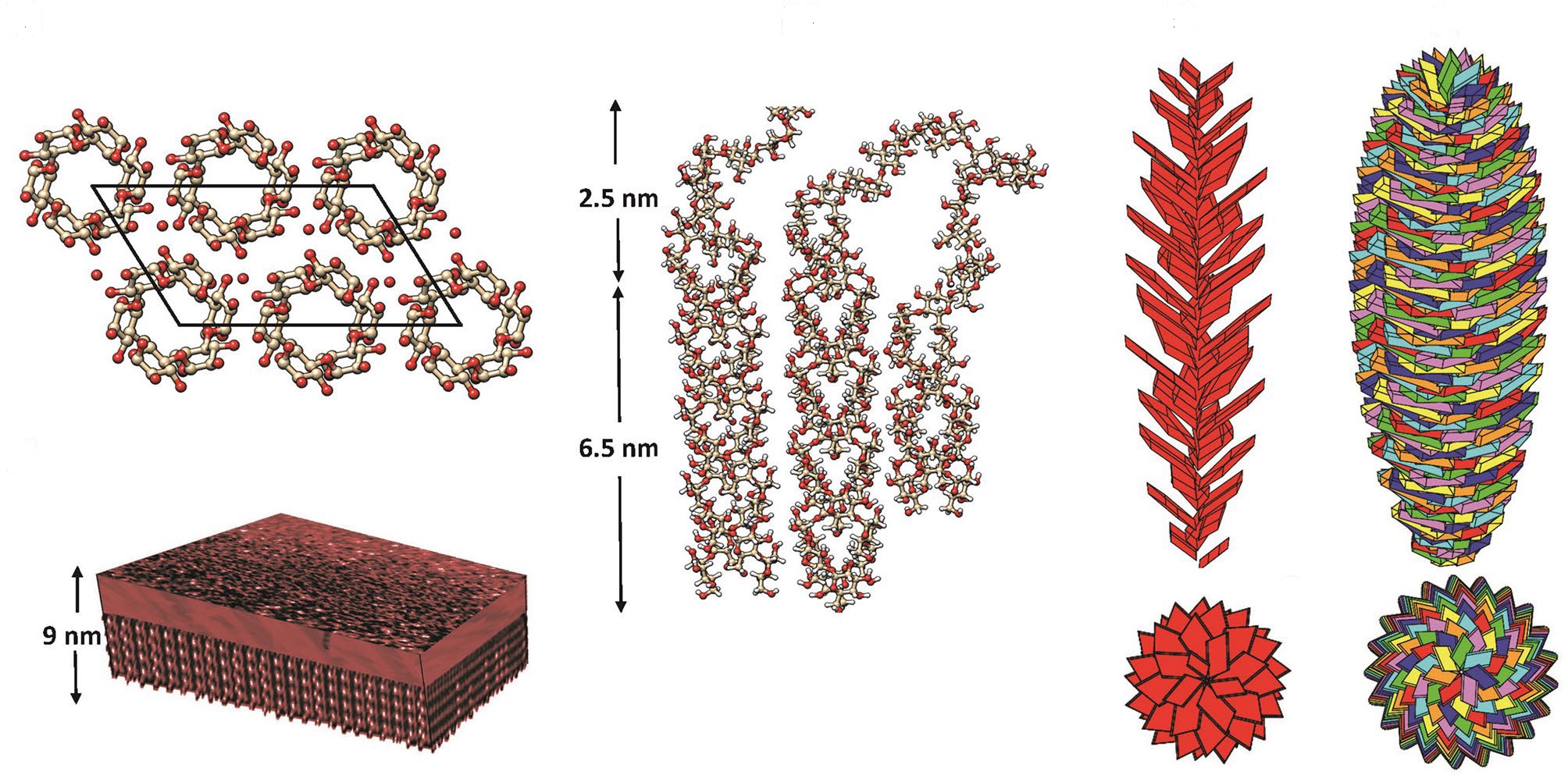
The model follows the Fibonacci Golden Angle, to form several Golden Spiral Ellipsoids, from which were derived theoretical models to simulate scattering patterns. Golden Spiral Ellipsoids constructed with elements made up of parallel stranded double-helices, displayed shapes, sizes and high compactness reminiscent of the most intriguing structural element: the ‘blocklet’. From the convergence between the experimental findings and the theoretical construction, it is suggested that the «phyllotactic» model represents an amylopectin macromolecule, with a molecular weight in the order of 108 Daltons. These results offer a new vision to some previous models of starch. They complete a consistent description of the levels of organization over four orders of magnitude of the starch granule.

